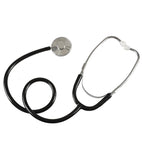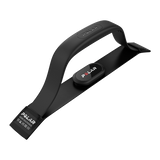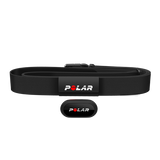If you hang around old cowboys and experienced horse owners long enough, you will probably hear them talk about something called heart. A good horse is often said to have a lot of heart, but what does that term really mean. When they talk about heart, they typically mean the horse tries hard to please its rider and do what it is asked. Even so, those old timers may be on to something. Horse heart rate is a serious consideration for any equestrian, and something every rider needs to understand.
The Importance of Knowing Your Horse’s Heart Rate
An Elevated or Low Heart Rate Can Help Diagnose Health Problems
Anytime you call your vet about a potential problem with your horse, he or she is going to want to know three things: body temperature, what is it’s respiration like, and of course the pulse or horse heart rate. The reason for this is simple. The horse heart rate can be vital in determining what could be wrong with your horse. Because of this, knowing your horse’s resting heart rate can help you to distinguish whether your horse may have a problem before you even call your vet.
You should keep a record of your horse’s resting heart rate though out its life to use as a baseline in those times when there may be a problem. Most resting horses have a pulse of 32 to 40 beats per minute. However, it is always a good idea to know your horse specifically.
Examples of Issues That Could Be Determined by Horse Heart Rate
The most common cause of an elevated heart rate in horses is caused by colic, or intestinal pain. Additional symptoms may include acting agitated or worried. The horse may repeatedly lie down and get back up, circle in place or bite their sides. If you notice these symptoms, it is time to check you horse’s heart rate and be ready to call you veterinarian. In addition, the elevations can be mild to severe, and the amount of increase can be a sign of the severity of the horse’s pain.
A lethargic or drowsy horse may have a lower than normal heart rate, a symptom that can be caused by several potentially dangerous conditions. For example, if the pulse is weak or soft, it can indicate problems that the heart isn’t pumping forcefully enough and can be a sign of equine heart disease.
Determining the Effectiveness of Your Horse’s Training and Physical Conditioning Program
When it is time to work on improving your horse’s physical conditioning, it is good practice to know the normal horse heart rate when compared to the horse heart rate after exercise. This measurement is the single best indicator of the horse’ s fitness. Being able to check your horse’s pulse is an excellent way to monitor the effectiveness of your horse’s training and fitness regime.
The aerobic threshold is the level of effort at which anaerobic energy pathways start helping with energy production. Having an increased aerobic threshold is key for being able to go longer and further. For a horse, the aerobic threshold is less than 165 beats per minute. This means if you want to effectively condition a horse for aerobic fitness, the heart rate should be raised and sustained between 100 beats per minute and 165 beats per minute.
The anaerobic threshold for a horse that is building up its tolerance to the stress of exercise is approximately 165 to 185 beats per minute. In addition, any horse in good anaerobic condition will have a recovery heart rate of about 100 beats per minute approximately two minutes after aerobic exercise conditioning. The heart rate 10 minutes after exercise should be less than 60 beats per minute.
Finally, a sprinting horse should have a heart rate of over 190 beats per minute and in between sprints your horse’s heart rate should slow to 120 beats per minute. In addition, if the heart rate does not slow to 130 to 140 beats per minute after two minutes, the horse should be allowed to cool off and should be monitored for signs of continued fatigue.
How To Measure Horse Heart Rate
You can quickly check for a slow or elevated heart rate by placing your hand on the animal, but for an accurate assessment, you will need at least a stethoscope or preferably a horse heart rate monitor.
Using a Stethoscope to Measure Horse Heart Rate
To check the horse heart rate, insert the earpieces of the stethoscope, and then place the end of the device directly on the animal's rib cage right behind the left leg. Count each heartbeat carefully while checking your watch, stopping at the 15-second mark. To get the beats per minute, simply multiply the 15-second count by four.
 A stethoscope is a cheap way to monitor heart rate an is a necessity in any equine first aid kit. If you want to keep you horse healthy, and do not already have one or if you need a new one, please take a look at the Horse Stethoscope in our store. Believe me, the next time your horse is acting out of sorts you will think it is the best $20.99 you have ever spent! Click Here to see the Horse Stethoscope.
A stethoscope is a cheap way to monitor heart rate an is a necessity in any equine first aid kit. If you want to keep you horse healthy, and do not already have one or if you need a new one, please take a look at the Horse Stethoscope in our store. Believe me, the next time your horse is acting out of sorts you will think it is the best $20.99 you have ever spent! Click Here to see the Horse Stethoscope.
Using a Polar Equine Heart Rate Monitor to Measure Heart Rate
Research shows that electronic monitoring systems are the most reliable method of determining horse heart rate during and after exercise. While these monitors used to be prohibitively expensive, reliable heart monitors with can now be purchased that connect to an app on your smartphone for under $300.00. These monitors can be worn by your horse while it is training or when it is sick and allow you to see your horse’s heart rate in real time.
This means you can adjust your horse’s training session on the fly according to its needs that day. You will be able to reach peak performance and consider proper warm up and recovery of your animal. In addition, you will also be able to monitor the condition of an animal that is acting sick, agitated, or lethargic and determine if its condition is getting better or worse.
More About Equine Heart Rate Monitors
The Polar Equine Heart Monitors are by far the top of the line when it comes to tracking your horse’s heart rate. These monitors are affordable and allow you to constantly and consistently monitor pulse and they link to your cellphone via an app. Buy one of the monitors at the links below.
Polar Equine Healthcheck - $249.95
 When you need to take your horse’s heart rate quickly and easily, Polar Equine Healthcheck is the optimal solution. Just place the handlebar against the horse’s coat and see the heart rate on the free Polar Equine app within seconds. With Polar Equine Healthcheck, checking your horse’s resting and recovery heart rate is easier than ever.
When you need to take your horse’s heart rate quickly and easily, Polar Equine Healthcheck is the optimal solution. Just place the handlebar against the horse’s coat and see the heart rate on the free Polar Equine app within seconds. With Polar Equine Healthcheck, checking your horse’s resting and recovery heart rate is easier than ever.
Polar Equine Heart Rate Monitor For Riding - $199.95
 The Polar Equine heart rate monitor helps you follow how effectively your horse is training. The Polar Equine riding belt is designed to fit perfectly under the saddle, so it’s comfortable and safe to use and can be used for all equestrian sports.
The Polar Equine heart rate monitor helps you follow how effectively your horse is training. The Polar Equine riding belt is designed to fit perfectly under the saddle, so it’s comfortable and safe to use and can be used for all equestrian sports.
Polar Equine Heart Rate Monitor For Trotters - $199.95
 The Polar Equine heart rate monitor for trotters helps you monitor your horse’s heart rate easily and safely. It suits perfectly for trotting training, but it’s also ideal for all situations that require following a horse’s heart rate for longer periods of time, such as equine research projects.
The Polar Equine heart rate monitor for trotters helps you monitor your horse’s heart rate easily and safely. It suits perfectly for trotting training, but it’s also ideal for all situations that require following a horse’s heart rate for longer periods of time, such as equine research projects.
In Conclusion
Having a good veterinarian for your horse is critical, but so is knowing some basic equine first aid. Knowing how to check your horse's heart rate is a vital part of proper care, so get yourself a good stethoscope or heart rate monitor and keep it handy in your tack room.

